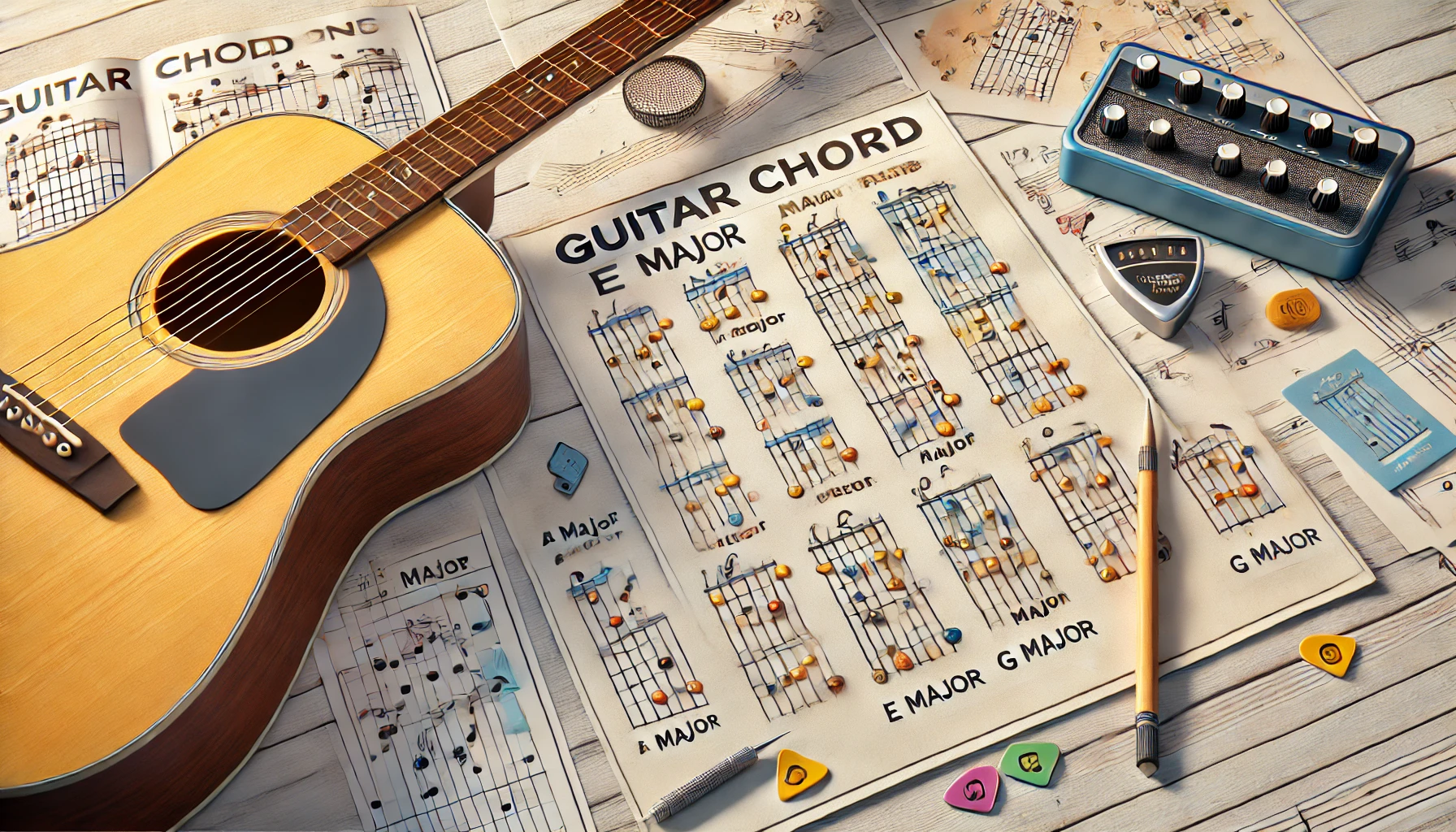Learning to play the guitar is an exciting and rewarding journey, and as with any instrument, building a solid foundation is key to long-term success. For beginner guitarists, mastering the basic chords is the first essential step in this journey. With these chords, you’ll be able to play countless songs, jam with friends, and even start writing your own music. The great news? You don’t need to learn hundreds of chords right away. By focusing on the most commonly used chords, you’ll quickly develop the skills you need to play a wide variety of music.
In this article, we’ll explore the essential guitar chords that every beginner guitarist should know, breaking down how to play them, why they’re important, and offering tips and exercises to help you master them fast.
The 7 Most Important Beginner Guitar Chords
As a beginner, there are seven essential chords you should learn first. These chords appear in countless songs across various genres, and by mastering them, you’ll be equipped to play many popular tunes. Let’s dive into these key chords:
- E major (E)
- E minor (Em)
- A major (A)
- A minor (Am)
- D major (D)
- C major (C)
- G major (G)
These seven chords form the backbone of many musical styles, including pop, rock, folk, and blues. Once you’ve learned these shapes, you’ll be able to transition between them and build the muscle memory needed to switch smoothly and play songs more effortlessly.
Let’s break down each chord:
- E major (E): A bright, full-sounding chord, E major is a common chord used in rock and blues music. It’s also one of the easiest chords to learn, making it an excellent starting point.
- E minor (Em): The E minor chord is one of the easiest minor chords to play, with just two fingers. It’s perfect for adding a somber, emotional tone to your playing.
- A major (A): This chord has a rich sound and is used in a wide variety of genres, from folk to country. While it can be slightly tricky to fit all three fingers on the second fret, it’s a fundamental chord to master.
- A minor (Am): Like its major counterpart, A minor is frequently used in music. Its melancholic tone makes it a favorite in ballads and softer pieces.
- D major (D): D major offers a bright, happy sound and is commonly used in pop and folk music. It requires careful finger placement but opens the door to many new songs once mastered.
- C major (C): C major is another foundational chord that appears in countless songs. It can feel a bit of a stretch at first, but with practice, it will become more comfortable.
- G major (G): G major is a popular chord with a rich, full sound. It can be slightly challenging for beginners due to the stretch required between the fingers, but it’s worth the effort.
Open Chords vs. Barre Chords
The seven chords we just covered are known as open chords, which means they involve one or more open strings—strings that are played without pressing down any frets. Open chords are great for beginners because they’re relatively easy to learn and play. They allow you to play a variety of songs with minimal finger movement.
As you progress, you’ll eventually encounter barre chords. These chords are more advanced and involve pressing down multiple strings with a single finger (your index finger), effectively acting as a “movable capo” across the fretboard. While barre chords allow for greater versatility and the ability to play more complex music, they can be challenging for beginners. However, mastering open chords provides the foundation you need to tackle barre chords with confidence down the road.

Chord Exercises and Practice Tips
To effectively learn and master these essential chords, regular practice is crucial. Here are some exercises and tips to help you practice efficiently and improve your chord-playing skills:
- Practice Chord Changes
- Smooth transitions between chords are key to playing songs fluidly. Set a metronome to a slow tempo and practice switching between two chords, for example, from G major to C major. As you get more comfortable, gradually increase the tempo to speed up the transitions. Focus on clean sound and precise finger placement.
- Strum in Different Patterns
- Once you’re comfortable with the basic chords, start experimenting with different strumming patterns to add texture and dynamics to your playing. Try simple down-up strums, then advance to alternating bass notes and percussive strumming techniques to make your playing more interesting.
- Play Along with Songs
- One of the most effective ways to reinforce your chord knowledge is to apply it to real music. Find songs that use the chords you’ve learned and play along. For example, songs like “Wonderwall” by Oasis or “Knockin’ on Heaven’s Door” by Bob Dylan use several of the basic chords, making them perfect practice material for beginners.
- Use a Chord Chart
- A chord chart can be a helpful visual reference when learning new chords. Keep one handy while practicing so you can quickly look up finger positions when needed. This will also help reinforce your memory of the chord shapes.
- Practice Regularly
- Consistency is key. Set aside time each day to practice, even if it’s just for 15 minutes. Regular, focused practice will help your hands develop the muscle memory needed to play chords naturally. Over time, switching between chords will become second nature.
Conclusion
Mastering these seven essential guitar chords is a huge step forward in your guitar-playing journey. These foundational chords will not only allow you to play thousands of songs but will also serve as the building blocks for more advanced techniques like barre chords and fingerpicking.
Remember, learning guitar is a gradual process, and it’s important to be patient with yourself. Celebrate each small success, whether it’s smoothly transitioning between two chords or mastering a new strumming pattern. With regular practice and dedication, you’ll soon find that these chords become second nature, allowing you to express yourself musically and enjoy playing your favorite songs.
So grab your guitar, get practicing, and most importantly, have fun with the process! With these essential chords in your toolkit, you’re well on your way to becoming the guitarist you’ve always wanted to be.






